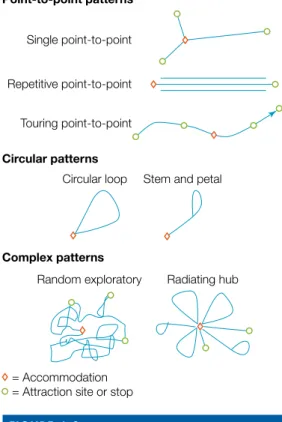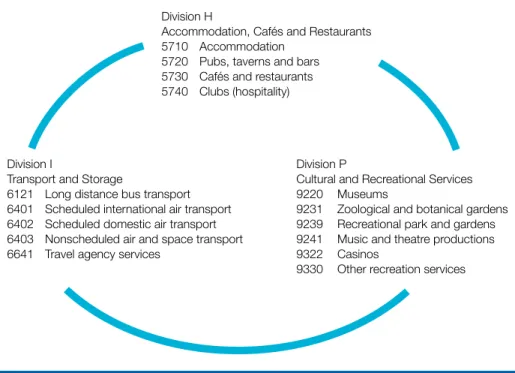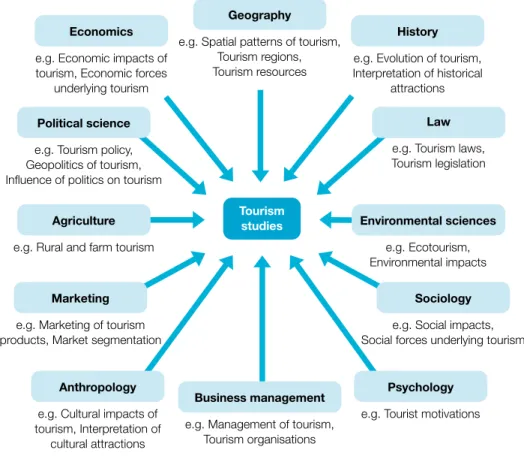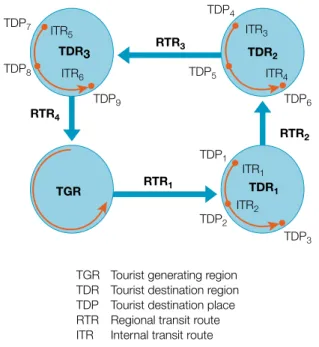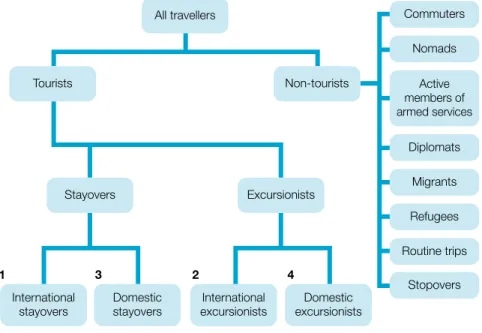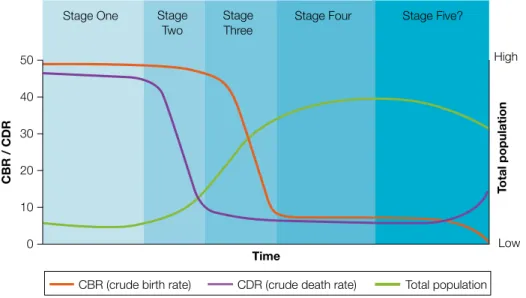Reproduction and communication for educational purposes The Australian Copyright Act 1968 (the Act) permits a maximum of one chapter or 10% of the pages of this work or - where this book is divided into chapters - one chapter, whichever is greater. reproduced and/or communicated by an educational institution for its educational purposes, provided that the educational institution (or the body which administers it) has given a remuneration notice to the Copyright Agency Limited (CAL). Data Collection 373 Data Analysis 374 Data Presentation 375 Data Interpretation 376 Chapter Review 377 Summary of Key Concepts 377 Questions 378 .
Laura LaWton
P r e faC e
Sons UK: 57 From 'An Historical Geography of Recreation and Tourism in the Western World by John Towner, published by Wiley, UK, p. National Geographic: 103 © MICHAEL NICHOLS/National Geographic Creative. Travel Motivation: A Critical Review of Concept Development”, p. Eds), 2007, Tourism Management: Analysis, Behavior and Strategy, published by CAB International, Wallingford • Center for Copyright Release: 177 Reprinted from Annals of Tourism Research, Vol.
The Code was developed as a reflection of both organizations' strong commitment to sustainable tourism development across the Asia-Pacific region. 6 explain why the increasing number of peer-reviewed tourism journals is a core indicator of development in tourism studies.
Introduction to tourism
5 identifies the contributions of each of the four 'platforms' to the evolution and maturation of tourism studies. The section 'Tourism as an academic field of study' traces the development of tourism studies as an academic focus and considers the factors that have hindered its evolution as such, as well as cur.
The importance of tourism
Also notable in the extended definition is the expansion of the tourism dynamic to include transport as well as the management process. For a destination, management and planning imply deliberate efforts to control the development of tourism to help fulfill the long-term economic, social, cultural and environmental aspirations and strategic goals of the people living in that destination.
Obstacles to development
The tertiary education sector has much to contribute to the developing science of tourism management and planning, and the ongoing development of tourism studies is an important development that runs parallel to the expansion of tourism itself. The focus of tourism and its place in the wider system of academic research are therefore not very clear.
Current status
Finding data on the size of the tourism industry in Australia and New Zealand, for example, is hampered by the lack of a single 'tourism' category within the Standard Industrial Classification (SIC) code used by these two countries (ABS 2006) . Regardless of deliberations on theories and disciplinarity, the maturation of tourism studies is indicated by its visibility within university-level teaching and research in Australia and elsewhere.
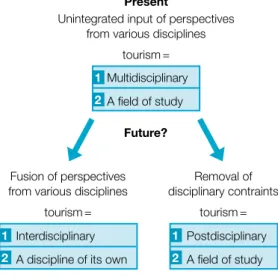
A sequence of tourism platforms
Supporters of the adaptation platform are ideologically aligned with the warning platform; what sets them apart is their proposal for different modes of tourism that they claim will better 'fit' the needs of local communities. It is through the accession of tourism academics to the knowledge-based platform that is.
Universities and VET providers
Effective management decisions about such complex systems should not be based on emotion or ideology, but on sound knowledge obtained through the application of the scientific method (see Chapter 12) and informed by rel. However, an emerging counter-argument is that the knowledge-based platform is too technical and insufficiently informed by the ethics of human need.
Characteristics
Second, this book provides a 'stateoftheart' introduction to a coherent field of tourism studies that is gradually moving away from a multidisciplinary to an interdisciplinary or postdisciplinary focus. Prominent among the disciplines that inform tourism studies are geography, business, economics, sociology, anthropology, law, psychology, history, political science, environmental science, leisure sciences and marketing.
Chapter outline
Both approaches are consistent with Figure 1.4, which recognizes that an integrative and comprehensive understanding of tourism requires exposure to the theories and perspectives of other disciplines and fields (Holden 2005). Third, the book is national in scope in that its primary geographic focus is on Australia, but it is also international in the sense that the Australian situation is both influenced and informed by developments in other parts of the world, and in particular in Asia Pacific. region.
Chapter structure
The evolution of tourism studies as an emerging field of academic research within the university system is also considered. Philosophically, the field of tourism studies has evolved through a sequence of dominant perspectives or 'platforms'.
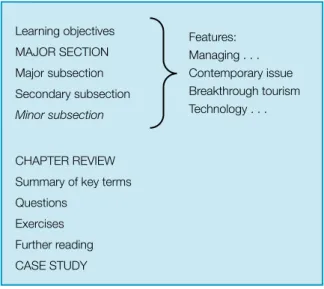
The tourism system
1 describe the basic structure of a tourism system 2 assess the external forces that influence and are influenced by them. The subsequent section "Tourist" defines the different types of tourists, considers the purposes of travel that qualify as tourism, and discusses the problems associated with these definitions and related data.
The introductory chapter defined tourism and described the development of tourism as a widespread focus area within the university system, despite lingering prejudices. This is indicated by the large number of tourism-related programs and peer-reviewed journals as well as the movement towards a more objective knowledge-based philosophy that recognizes tourism as a complex system that requires scientific investigation.
The basic whole tourism system
The internal structure of the tourism system is also much more complex than implied by figure 2.1, thereby presenting more challenges to the effective management of tourism. Regarding the stakeholders depicted in figure 1.1, the tourists and the tourism businesses (or tourism industry) are present throughout Leiper's tourism system (figure 2.1), as well as non-governmental organizations (NGOs) and educational institutions.
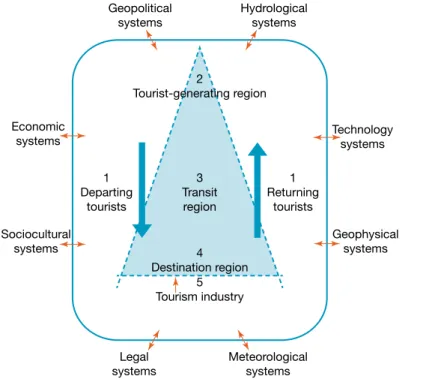
Spatial component
As suggested in Chapter 1, the definition of tourism depends on the definition of the tourist. In 2012, for the first time, more than one billion international stays were recorded from the cumulative reports of UNWTO member countries.
Temporal component
Travel purpose
In the period from 1 November 2011 to 31 October, inbound visitors arrived in Australia to attend conferences or conventions, or about 4 per cent of total intake (Business Events Australia 2012). It is only on the basis of the primary purpose that table 2.1 is derived, and political and management decisions are subsequently made.

Major tourist categories
An additional complication is that people in the same travel group may have different travel goals. The tourism terms mentioned above, although common in the literature, do not correspond to the terms used by the UNWTO.

Data problems
Most stopover traffic occurs at international hub airports such as Singapore, Bangkok, Dubai and Frankfurt. Singapore, whose Changi Airport offers a variety of stopover services and attractions, including city tours (turning them into daytrippers and future staycationers), exemplifies an innovative management approach to extracting maximum economic benefit from transit passengers.
Origin community
New Zealand clinics and returning tourists also need to be more aware of RRF and its diagnostic characteristics so that infected people can be identified and treated more effectively. RRF has the potential to become an emerging infectious disease in New Zealand and returning tourists are one of the most likely means through which this is likely to occur if sufficient precautions are not taken.
Origin government
As with regions of origin, few studies have explicitly recognized the importance of the transit region component of the tourism system. The transit/destination distinction is even more ambiguous in cruise ship tourism, where the actual cruise is an important component of the travel experience and a 'destination' in itself.
Management implications of transit regions
Others have called for more international travel, although nearby Hong Kong and Macau are already experiencing influxes similar to those on the mainland. For example, Cuba is currently little more than an incidental transit location in the United States tourism system to Jamaica due to the aforementioned hostility of the US government to the Castro regime.
Effects of technology
The destination region is the geographic component of the tourism system that has received by far the most scrutiny from researchers, planners, and managers. During the era of the advocacy platform, this attention focused on the destination-based tourism industry.
Destination communities
Destination governments
A confusing element in the above definition of the tourism industry is the extent to which various commercial products and services are related to tourism. Space tourism: research recommendations for the future of the industry and perspectives of potential participants.
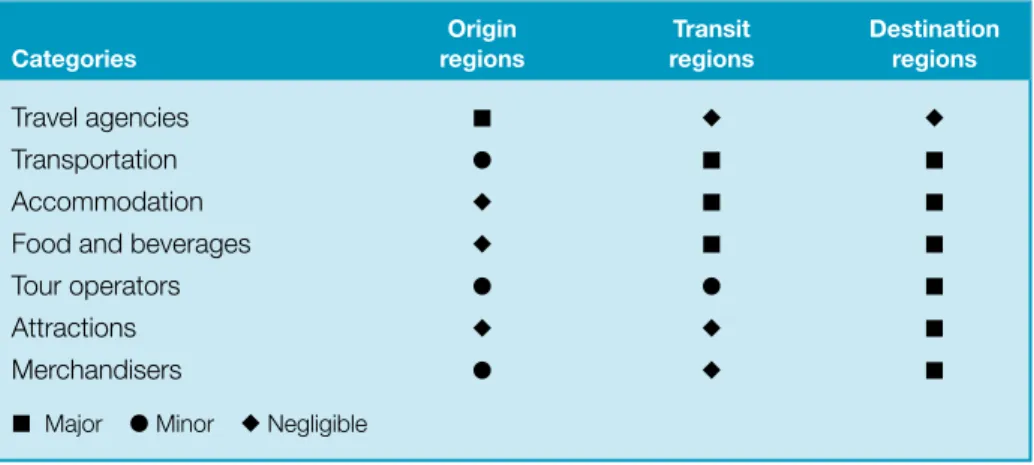
The evolution and growth of tourism
3 identify the role of Thomas Cook and the Industrial Revolution in facilitating the modern era of tourism. The 'Contemporary tourism (1950 onwards)' section introduces contemporary mass tourism, while the section that follows describes the main economic, social, demographic, technological and political factors that stimulated the demand for tourism during this era.
Mesopotamia, egypt and the Indus Valley
Management-related observations were also made for the origin, transit and destination components of the tourism system. The early modern tourism section considers the early modern era, which links the premodern to the contemporary period through the influence of the Renaissance and the Industrial Revolution.
China
Ancient greece and Rome
However, the tendency to engage in tourism was socially sanctioned by the prevailing philosophy of culture (applicable at least to the elite), which valued leisure for its own sake as an opportunity to engage in artistic pursuits, intellectual and athletic (Lynch & Viçi 2006). The site of the ancient Olympic Games in Greece remains an enduring cultural icon of the Western world, despite consisting only of ruins.
The Dark Ages and Middle Ages
These travelers had a wide choice of destinations given the size of the empire, the high level of stability and security achieved during the Pax Romana (Roman Peace) at its height, and the extremely sophisticated network of Roman military roads (many of which are still in use today) and associated rest stops. Villas were clustered around the Bay of Naples in the first century AD, and those Romans who were wealthy enough to travel long distances were particularly drawn to the historic sites of the Greeks, Trojans and Egyptians.
The grand Tour
Europe began to emerge from the Middle Ages in the late 14th century, aided by the experience of the Crusades and later by the impact of the great explorations. The classes from which the Grand Tour participants were drawn represented between 7 and 9 percent of the British population in the eighteenth century.
Spa resorts
These impacts were also felt at least economically in the destination regions through the prevalence of the souvenir trade and tour guiding within major destination cities. Further indicative of tourism's timeless tendency to promote business opportunity was the first appearance in the 1820s of the practical travel guide, aimed at future Grand Tourists (Withey 1997).
Seaside resorts
In Australia, seaside resorts such as Manly, Glenelg and St Kilda were established in the late nineteenth century to serve the growing urban areas of Sydney, Adelaide and Melbourne. The advance of the Industrial Revolution in England and Wales coincided with the expansion of seaside resorts to meet the growing demand for coastal holidays.
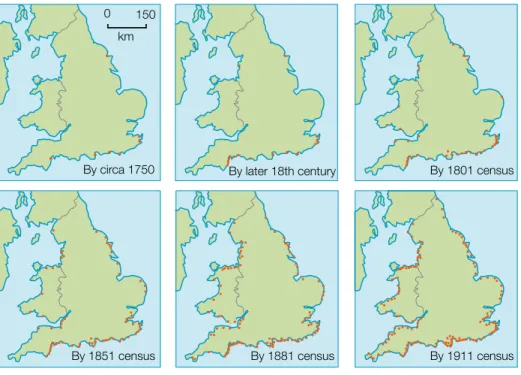
Thomas Cook
The post-Cook period (1880–1950)
Growth in international tourism in the post-Cook period of the early modern era was less robust than in the domestic tourism sector. Resumed tourism growth in the 1920s was subsequently curtailed by the Great Depression of the 1930s and World War II (1939–45).
CONTeMPORARY TOURISM (1950 ONWARDS)
Inland tourism also flourished in the United Kingdom, and by 1911 it was estimated that 55 percent of the English population made day trips to the coast, while 20 percent traveled there as a stay (Burton 1995). The first of these was the global depression of the 1890s, and this was followed two decades later by World War I (1914–1918).

The world’s biggest industry?
Finally, stage four represents a fully developed post-industrial country with widespread prosperity and a subsequent pattern of ubiquitous participation in domestic tourism as well as international mass tourism to a wide variety of short- and long-haul destinations. As shown in Figure 3.4, household consumption expenditure in Australia continued to rise steadily in real terms in the early 2000s, increasing by 15.2 per cent between 2003 and 2011.
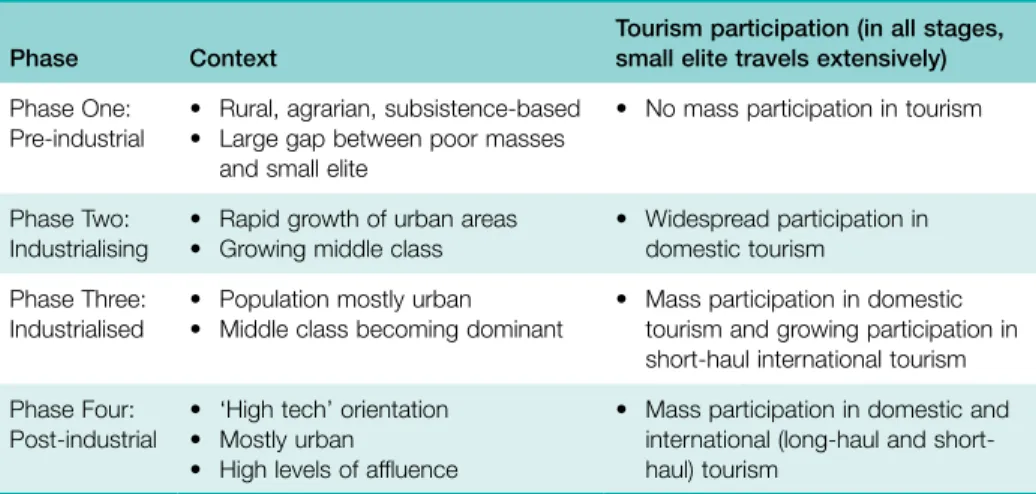
Social factors
One of the first major changes was the introduction of the two-day weekend, which was important to enable staycation tourism in nearby (usually domestic) countries. Again, Australia was a pioneer, being one of the first countries to pass legislation to create a four-week holiday standard.
Demographic factors
However, the confounding factor not taken into account in the traditional demographic transition model is the pattern of collapsing fertility and eventual population decline. Similar patterns are experienced in all the other Stage 4 countries, culminating in the 850 million Stage 4 consumers mentioned earlier.
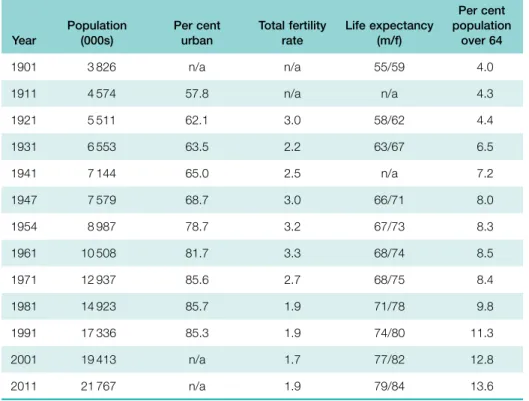
Transportation technology factors
Political factors
Premodern tourism describes the era of tourism activity from the beginning of civilization to the end of the Middle Ages. Thomas Cook the entrepreneur whose company Thomas Cook & Son applied the principles of the Industrial Revolution to the tourism sector through such innovations as the package holiday.
Destinations
4 describes and explains the status of tourism in each of the world's major regions, and assesses the attraction factors that have contributed to these patterns. The 'Regional Destination Patterns' section describes the tourism situation in each of the world's major geographical regions and examines the pull factors (or lack thereof) that apply in each case.
This chapter addresses the supply perspective by considering the spatial variations in the growth and distribution of tourism between and within the world's major regions, and the factors that underlie these patterns. The most important factors that have stimulated or hindered the development of tourism in each of these two 'macro regions' are also discussed in this section, but the 'Pull Factors Affecting a Destination' section considers the generic factors that attract tourism.
Tourism market share and growth
The following section examines these variations at the most basic level by describing the global inequality in tourism that exists between advanced and emerging economies.
Reasons for the proliferation of the emerging economies as destinations
The second phase, largely associated with the emergence of the pleasure periphery after the late 1960s, involves movements of people from advanced economies to emerging economies. An emerging fourth phase, which accounts for about 2 percent of international tourism flows, involves residents of emerging economies visiting the advanced economies.
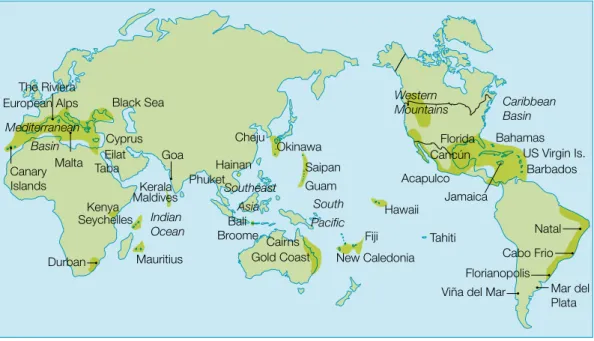
Geographical proximity to markets
Many mainland Chinese, for example, visit the mausoleum of Chiang Kai-shek, the founder of the renegade state of Taiwan, and are encouraged to pay their respects (Mishkin 2012). A distance-decay relationship is also evident in the pattern of travel outside Australia, with eight of the top ten destinations in 2007 and 2011 located in Oceania or Asia (figures 4.3 and 4.4).
Accessibility to markets
The Caribbean, Mediterranean and Southeast Asian sub-regions of the pleasure periphery, for example, have traditionally been dominated by American, European and Japanese tourists respectively. The government and the tourism industry often differ in their perceptions of the extent to which borders should be opened for inbound tourism.
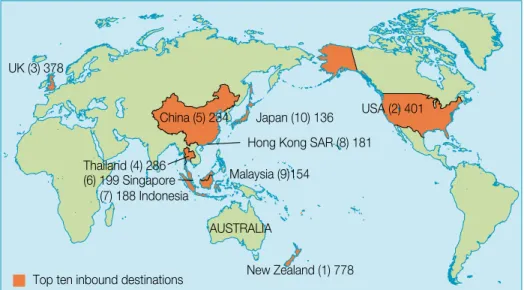
Availability of services
On a larger scale, the opening of borders between European Union countries has meant that travel between Sweden and Finland or the United Kingdom and France is no longer mediated by any border formalities, and is therefore equal in effect to domestic tourism (Prokkola 2010). This view is usually shared by government departments responsible for the development and promotion of the tourism sector, if such bodies exist within that country.
Availability of attractions
In relation to the issue of control that a destination has over its tourism resources, attractions range from those that already exist to those that are entirely "created". Examples of the former include climate and spectacular topographic or hydrological features (eg Uluru or Niagara Falls) or important historical sites (eg Hastings or Waterloo).
Cultural and spiritual links
Close cultural ties are the main factor underlying the status of the distant United Kingdom as an important destination for outbound Australian tourists (Figures 4.3 and 4.4). In addition, the tendency of destinations to attract culturally similar markets testifies to the importance of the comfort and risk minimization factors in tourism.
Affordability
Simply put, many tourists feel insecure or uncomfortable dealing with unfamiliar languages and social norms, and therefore prefer destinations similar to their own area of origin (see Chapter 6). In fact, each tourist must find their own individual middle ground between accepting and avoiding risk.
Peace, stability and safety
This was the main intention of the radical Islamic groups who launched a series of attacks on foreign tourists in Egypt during the 1990s. Tourists have sometimes become attractive targets for kidnappers because of the ransom they generate.
Positive market image
As described earlier, it is often a matter of “guilt by association” as the tourist market expands what is happening in Syria to the entire Middle East. These stereotypes complicate the ability of tourism destination managers and marketers to spread a positive image in the tourism market.
Pro-tourism policies
Similarly, an unsophisticated virtual tourist may apply a national stereotype to all destinations in a given country, perceiving, for example, all places in Switzerland in terms of tired alpine/lederhosen or all of California. A discussion of tourism marketing, which includes the attempt to manipulate the image of a destination within individual tourism markets, is given in Chapter 7.
Europe
Geographically, these qualities, and thus the intensity of tourism activity, are most evident in Western Europe. Eastern Europe is more complex, with former Soviet bloc states such as Poland, the Czech Republic and Hungary already heavily touristic due to their proximity to Western Europe and their systematic incorporation into the European Union (Hall, Marciszweska & Smith 2006).
Asia–Pacific
With almost three quarters of consumption, China and Hong Kong together dominate the market. A recent study of 470 outpatients at these facilities revealed the dominance of the Indonesian and Singaporean markets, which accounted for 72 percent and 23 percent respectively (Yeoh, Othman & Ahmad 2013).
The Americas
North America accounts for about 7 percent of the world's population, but 11 percent of all stayovers. Proximity is the main factor explaining these flows, as more than 90 percent of Canadians live within a day's drive to the United States.
The Middle East
Comprised of just three countries (the United States, Mexico and Canada), North America hosts two of the largest bilateral tourist flows in the world: United States - Canada and United States - Mexico. Because of its endowment of 3S resources and its access and proximity to the United States, the Caribbean has emerged as one of the world's most tourism-intensive subregions, with 0.6 percent of the world's population but 2.2 percent of its inhabitants.
Africa
The Middle East, as a Muslim-dominated region, was disproportionately harmed by the terrorism of September 2001 and its aftermath. This economically essential component has steadily increased since the government designated tourism as a strategic priority, engaged in more aggressively.
Australia
As shown in Table 4.5, New Zealand maintains a dominant and growing share of the market despite its small population, while the decline of Japan and the simultaneous rise of China is another notable pattern. Also sustaining Australia's inbound tourism industry is a low-profile but stable group of Asian countries.
Zanzibar
Murphy and colleagues (2012) identified factors that contributed to successful tourist shopping villages in Australia, New Zealand and Canada. Most of the Australian cases were located on the rural and urban fringes and included Mount Tamborine and Montville (Qld), Hahndorf (SA), Leura (NSW) and Healesville (Vic.).
The Australian pattern
1 Write a 1000-word report describing the extent to which the development of the Brazilian coastal periphery has been aided by each of the pull factors outlined earlier in this chapter. 8 discuss the implications of the concepts of integration and globalization as they apply to the tourism industry.
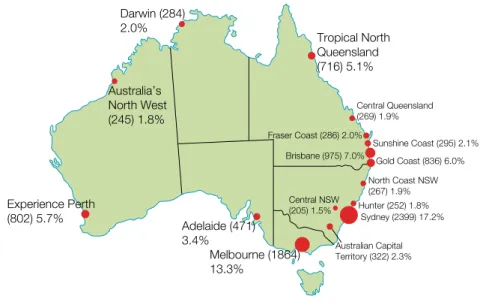
The tourism product
4 identify the different attraction attributes that can be assessed to make informed management and planning decisions 5 explain the basic characteristics of the tourism industry. For example, a national park may combine topographical, cultural, floral, and faunal elements of the site.
Natural sites
While commercial attractions such as theme parks and casinos are elements of the tourism industry, others such as generic non-commercial landscapes, local people and climate are not. In many areas, 'non-consumptive' wildlife-based activities such as ecotourism are overtaking hunting and fishing in importance (see Chapter 11).
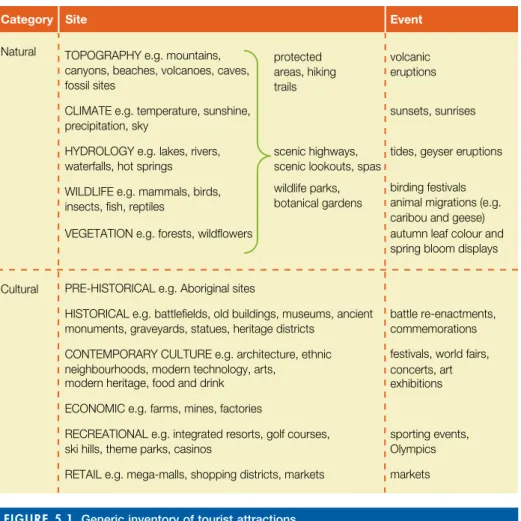
Natural events
Cultural sites
Cultural events can be categorized in various ways, including the extent to which they occur regularly or irregularly (for example, the Summer Olympics every four years versus one-off special commemorations) or location (the British Open tennis tournament held at Wimbledon versus the changing Olympic site). In addition, events can be 'single destination' (eg Wimbledon) or 'multiple destinations' in space or time (eg the Olympic venues spread over a region or the Tour de France cycling race on circuits).
Attraction attributes
In contrast, a circular or square area (eg some national parks) reduces the length of the attraction boundary and thus the potential for conflict with adjacent land uses. At the other end of the spectrum are ubiquitous attractions such as golf courses or theme parks; i.e. those that are found or can be placed almost anywhere.
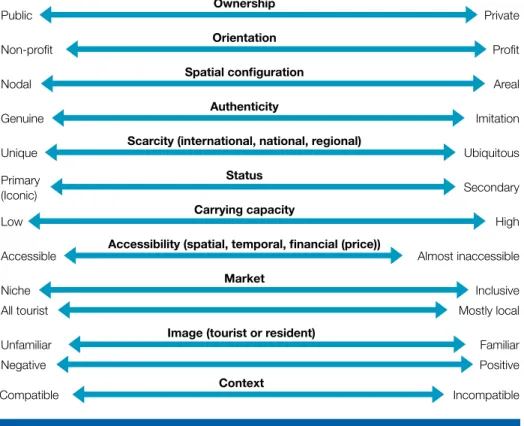
Travel agencies
The tourism industry, as described in Chapter 2, comprises those companies that provide goods and services wholly or mainly for tourist consumption. It is worth pointing out again that some aspects of the tourism industry are relatively simple (e.g. accommodation and travel agencies), while others (e.g. transport and restaurants) are more difficult to distinguish between their tourist and non-tourist components.
Transportation
Transport of traffic from a foreign country directly to another foreign country via the home country. As with cruise ships, the trip itself is as much a part of the 'destination' as the starting point and terminus.
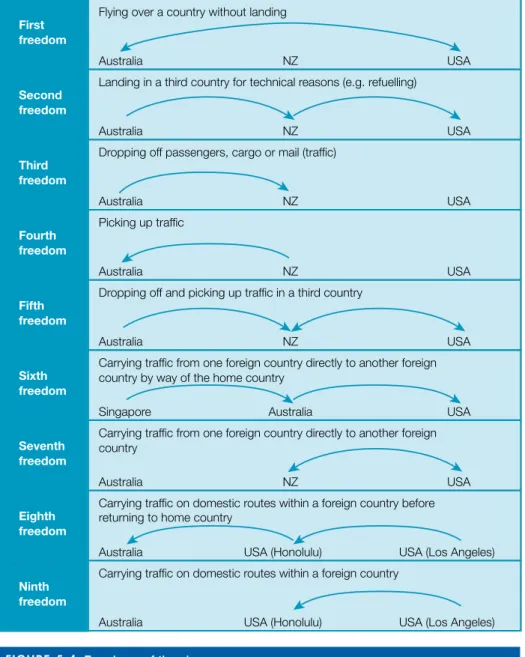
Accommodation
Queen Mary II, which is the first major liner to launch on the transatlantic route since Queen Elizabeth II in 1969. The regional cruise market in areas such as the Caribbean and Mediterranean has been more robust, expanding continuously since the 1980s ( Dowling 2006 ) .
Tour operators
It is now necessary to provide specialized products for a more diverse and discriminating market that likes to use the Internet to compile its own customized itineraries. One way to achieve product diversification is to treat each unit of the tourism experience as a separate 'mini-package', whereby consumers can combine units into a customized package tour that suits their individual needs.
Merchandise
The one-size-fits-all package tour was suitable for the industrial mode of production that dominated Thomas Cook's era, but it is less and less suitable for post-industrial society. One consumer may choose a two-week vacation at a full-service beach resort followed by a week in the wilderness on a bus tour, while another may choose a two-week wilderness lodge stay followed by a one-week, limited stay with the same operator. in a beach resort.
Industry structure
In contrast, vertical integration occurs when a firm gains greater control over elements of the product chain outside its own sector. Vertical integration occurs when a company gains greater control over elements of the product chain outside its own sector.
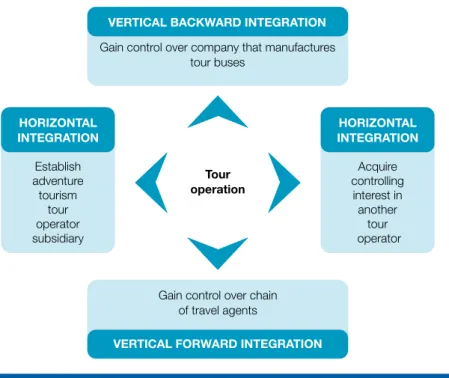
Tourist markets
The next section reviews the major market trends in the tourism sector since 1950, and this is followed by a discussion of the destination selection process. Basically, the overall trend has been towards a progressively more focused level of market segmentation, which can be defined as the division of the tourist market into distinct market segments that are assumed to be relatively consistent in terms of the behavior of their members.
The democratisation of travel
The previous chapter considered the variety and characteristics of attractions within the tourism system and also examined other supply-side components of the tourism industry, including travel agencies, transport, tour operators, traders and the hospitality sector. The tourist market is the overall group of consumers involved in tourism-related travel.
The emergence of simple market segmentation and multilevel segmentation
The final section considers the importance of tourism market segmentation and examines the geographic, sociodemographic, psychographic and behavioral criteria commonly used in segmentation exercises. Since 1950 there have been several key trends in the evolution of this market and these are discussed below.
Niche markets and ‘markets of one’
This usually occurs through the refinement of the 'pull' factor of the destination image as a result of direct experience (4) (e.g. the traveler had a wonderful vacation and thus takes a strongly positive destination image into the next evaluation process). The influence can also be indirect, such as when the travel experience leads to transformations in the personality or attitude of the individual (for example, the traveler is more open to onward travel to exotic destinations).
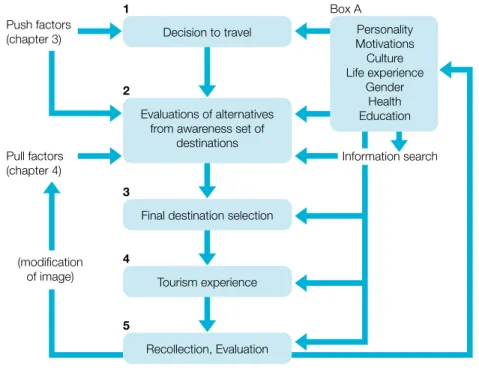
Multiple decision makers
The latter is likely to start with a small awareness set and rule out many destinations immediately due to the limitations just described (ie destinations that are too expensive, risky or child intolerant). The actual complexity of the evaluation process is evident in the fact that this often involves "final" decisions that are subsequently revoked or changed by changing push and pull factors - such as being denied an expected salary increase or news of a coup d'état in that destination , to be visited.
Are the segment's values, needs and desires compatible with the destination's or company's own values and planning strategies? Ultimately, the appropriateness of certain segmentation criteria for a destination or business will depend on the conclusions reached in evaluating the eight factors described earlier.
In the case of Australia, for example, useful distinctions can be made between the mature Japanese and emerging Chinese inbound tourism markets based on a range of tourism variables (see Table 6.1 and the case study at the end of this chapter). Residents of large metropolitan areas have better access to media and the Internet than other citizens, and more choices at all stages of the destination buying process.
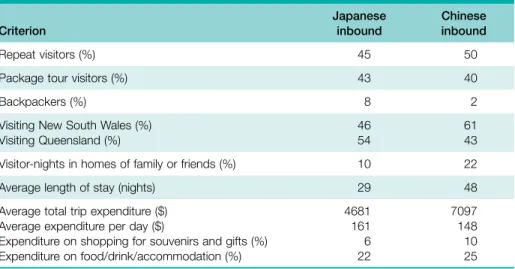
Sociodemographic segmentation
One of the major drawbacks of traditional FLC is the ever-increasing number of non-compliant people. According to the Australian Bureau of Statistics, in 2009, 18.5 percent of the Australian population (or over 4 million people) were considered to have a disability (ABS 2009).
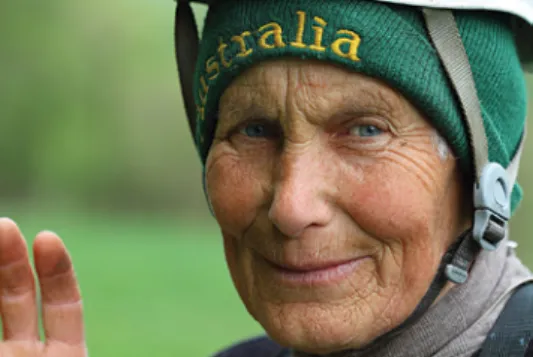
Psychographic segmentation
According to Plog, those who lean toward the allocentric and psychocentric poles of the psychographic spectrum each make up about one-fifth of the US population. The remaining 60 percent of the population, as depicted in Figure 6-6, are midcentric individuals whose personality combines elements of the allocentric and psychocentric dimensions.
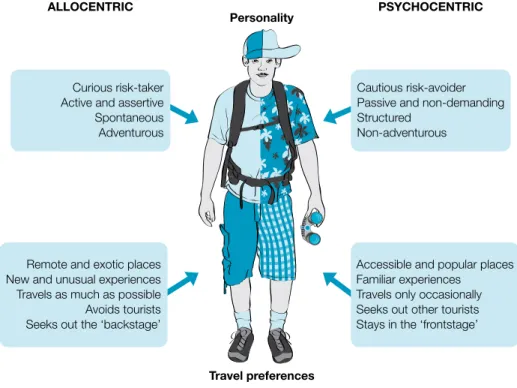
The market segments parts of the tourism market that are more or less distinct in their characteristics and/or behavior. Psychographic segmentation is the differentiation of the tourist market based on psychological and motivational characteristics such as personality, motivations and needs.
